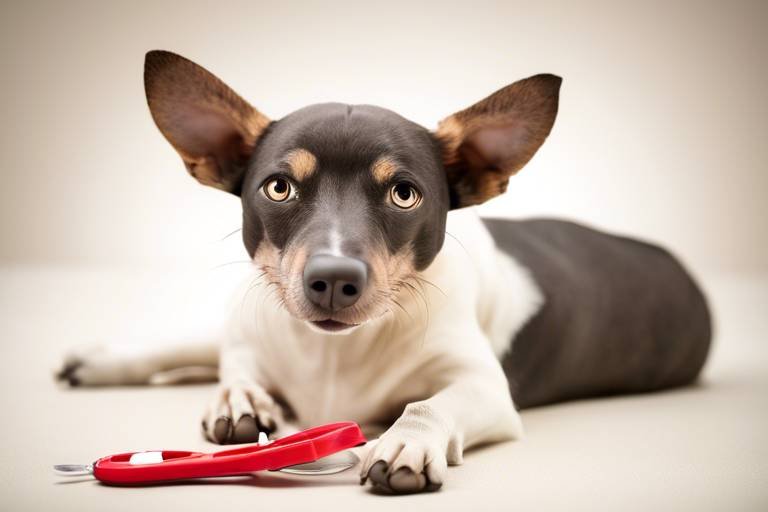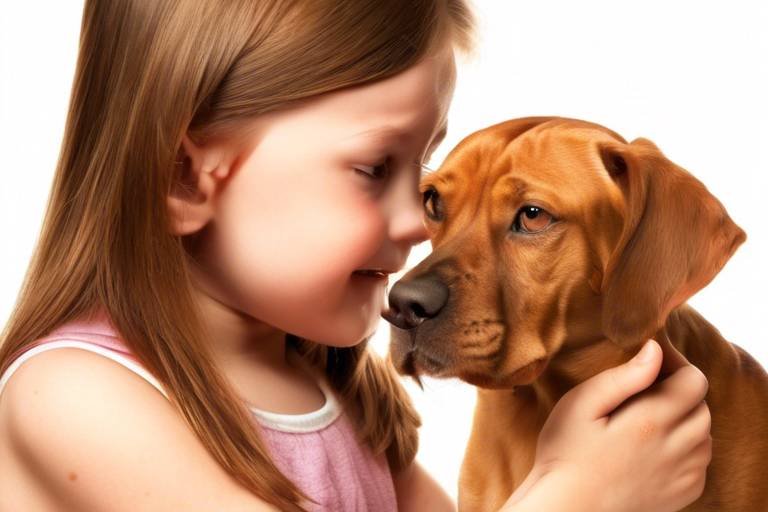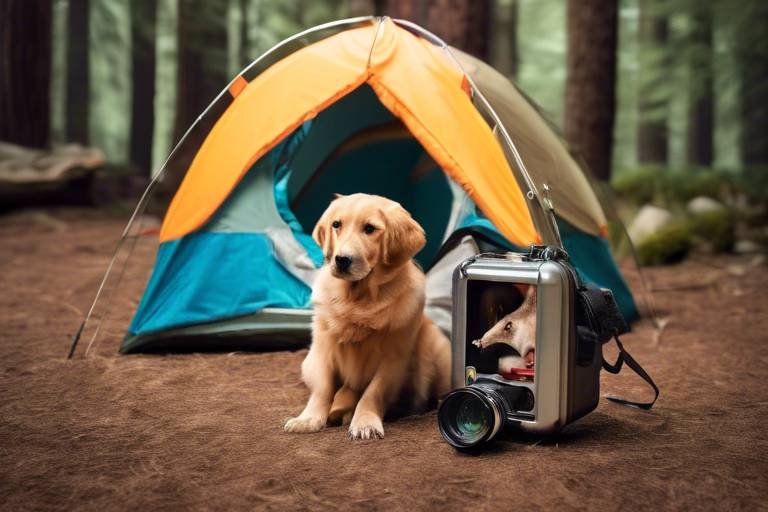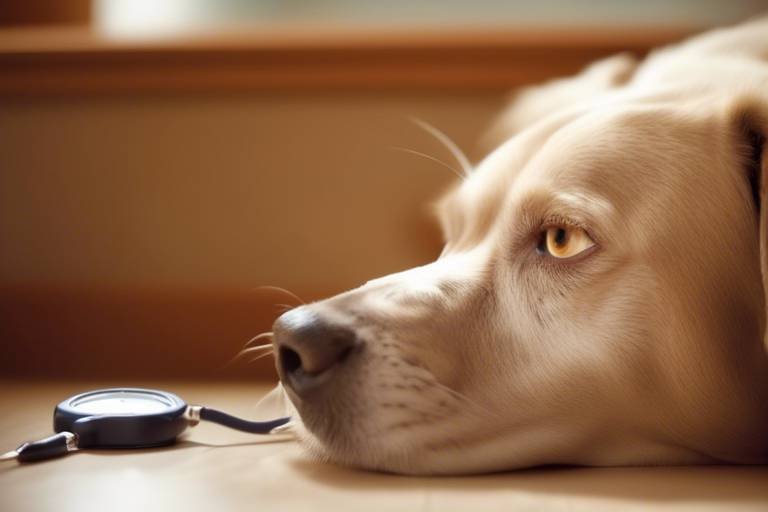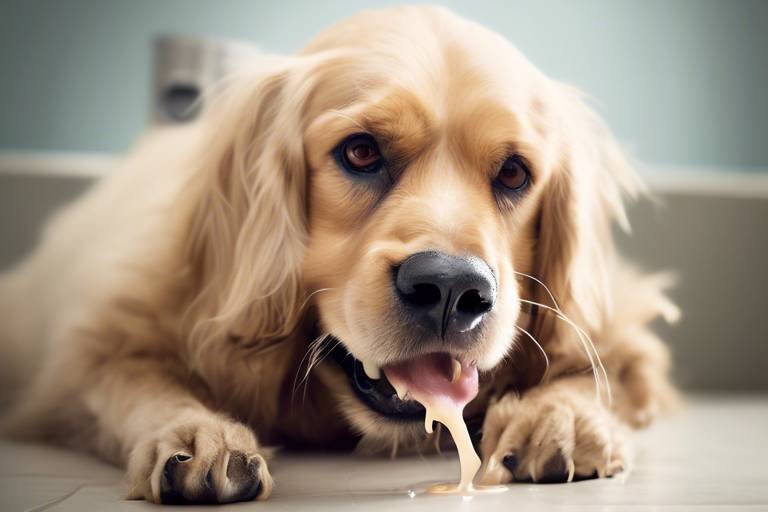How to Prevent Common Pet Injuries at Home
As pet owners, our furry companions are not just animals; they are beloved members of our families. Ensuring their safety and well-being is a top priority. This article explores practical strategies to safeguard your pets from common injuries that can occur in the home environment, ensuring their safety and well-being. With a little foresight and some simple adjustments, we can create a haven for our pets, reducing the risk of accidents and injuries. So, let’s dive into the world of pet safety and discover how we can keep our four-legged friends out of harm’s way!
Identifying the most frequent types of injuries pets encounter at home is crucial. Pets, especially dogs and cats, can be naturally curious and adventurous. This curiosity can lead them into precarious situations. Common injuries include cuts from sharp objects, poisoning from toxic substances, and even fractures from falls. For instance, did you know that the kitchen is one of the most hazardous places for pets? Sharp knives, hot surfaces, and potential choking hazards lurk around every corner. Understanding these risks is the first step in preventing them. By being aware of the nature of these injuries and their potential causes, we can take proactive measures to protect our furry friends.
A pet-friendly home minimizes risks. A few simple changes can make a significant difference in your pet's safety. Start by examining your living space with a critical eye. Look for potential hazards such as exposed electrical cords, small objects that could be swallowed, and unstable furniture that could topple over. Rearranging your home doesn’t have to be a daunting task; it can be as simple as moving a few items around. For instance, placing breakable items out of reach or securing heavy furniture can prevent accidents. Additionally, consider creating a designated area for your pets that is free from hazards, where they can play and relax without worry.
Many household items can be toxic or harmful to pets. This includes cleaning supplies, medications, and even certain plants. To protect your pets, it's essential to store these items safely. Always keep cleaning products in cabinets that are out of reach or secured with childproof locks. Medications should be stored in high cabinets, and be sure to dispose of any unused or expired medications properly. Additionally, be cautious with plants; some common houseplants can be toxic to pets. Creating a list of safe and unsafe plants can be beneficial. Here’s a quick reference:
| Safe Plants | Unsafe Plants |
|---|---|
| Bamboo Palm | Lilies |
| Spider Plant | Azaleas |
| Areca Palm | Oleander |
Just like children, pets are curious explorers. They love to investigate every nook and cranny of their environment. This curiosity can sometimes lead them into dangerous situations. Employing childproofing techniques can help keep your pets safe. For example, using safety gates to block off areas of the house that may be hazardous, such as staircases or rooms with delicate items, can be a simple yet effective measure. Additionally, consider using cabinet locks to prevent your pets from accessing potentially harmful substances. Remember, a little effort in pet-proofing can go a long way in preventing injuries.
Furniture placement can significantly impact pet safety. When arranging your living space, think about how your pets interact with their environment. Avoid placing heavy objects on shelves that could easily fall. Instead, ensure that furniture is stable and secure, minimizing the risk of tipping. Also, consider creating a comfortable space for your pets to lounge, away from high-traffic areas where they could get stepped on or bumped into. By thoughtfully arranging your furniture, you can create a more secure environment for your pets to thrive in.
Consistent supervision and training are vital in preventing injuries. Just like children, pets can get into trouble when left unsupervised. Make it a habit to keep an eye on your pets, especially in new environments or when they are playing with unfamiliar toys. Training is equally important; teaching your pets basic commands can help prevent accidents. For instance, commands like “leave it” or “stay” can be lifesavers in potentially dangerous situations. Engaging in regular training sessions not only strengthens your bond with your pet but also instills good behavior and safety awareness.
While this article focuses on indoor safety, outdoor environments pose risks too. When taking your pets outside, it’s essential to remain vigilant. Always supervise your pets during outdoor activities, especially in unfenced areas. Additionally, consider using a leash or harness to keep them secure and prevent them from wandering into dangerous situations. Outdoor adventures should be fun, but safety should always come first.
Using the right leash and harness can prevent accidents during walks. Not all leashes and harnesses are created equal; it’s crucial to choose the best options for your pet's safety. A well-fitted harness can prevent choking and give you better control during walks. Additionally, consider reflective leashes or harnesses for nighttime strolls to ensure visibility. Remember, a little extra care in choosing the right gear can make all the difference in your pet's safety.
Being aware of your pet's behavior can help you prevent injuries. Pets often communicate their discomfort or distress through body language. Common signs of distress include excessive barking, hiding, or changes in eating habits. If you notice any of these behaviors, take action to identify and address the underlying issue. Being proactive can prevent accidents and ensure your pet remains happy and healthy.
- What are the most common pet injuries at home? Cuts, poisoning, and falls are among the most frequent injuries pets face indoors.
- How can I pet-proof my home? Remove hazardous items, secure cleaning supplies, and rearrange furniture to minimize risks.
- Why is supervision important for pet safety? Supervision helps prevent accidents and allows you to address any potential dangers immediately.
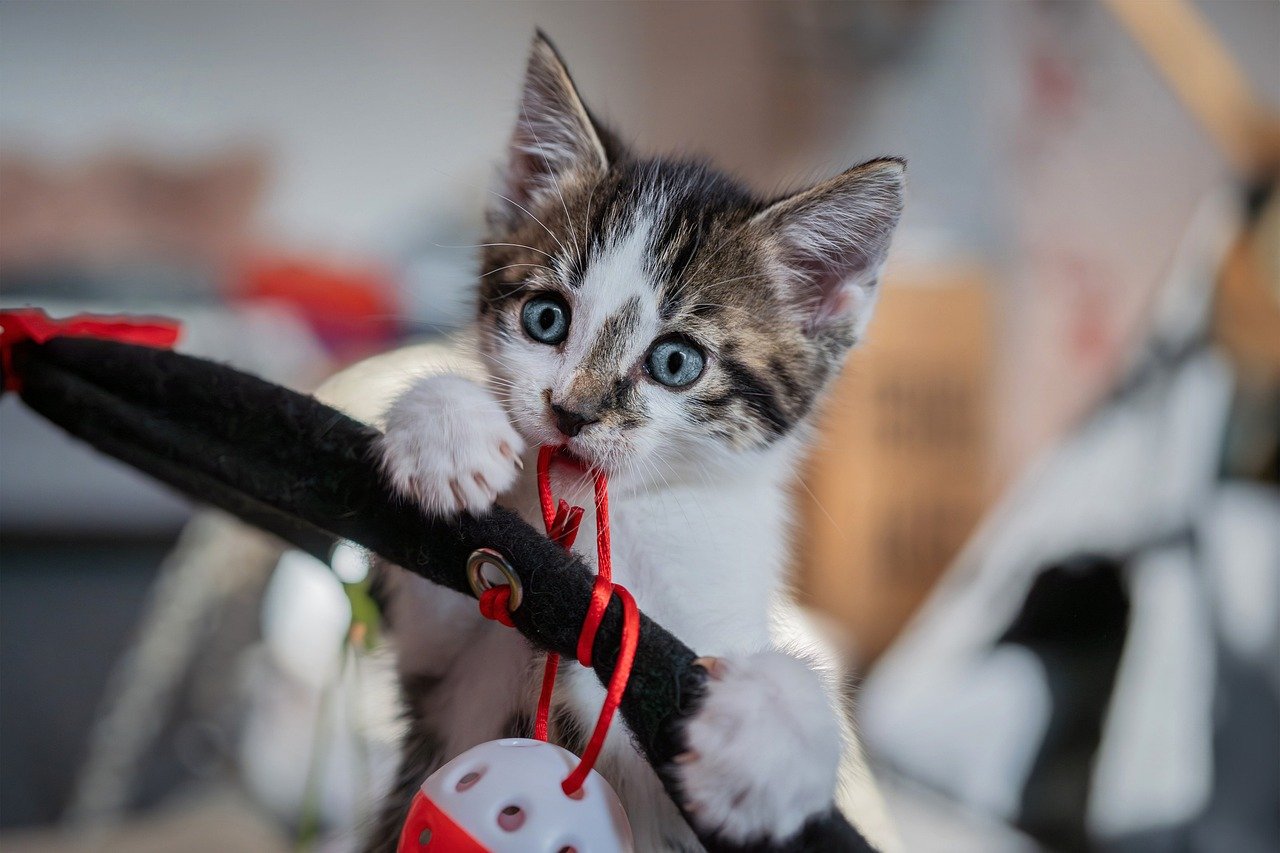
Understanding Common Pet Injuries
When it comes to our beloved pets, understanding the common injuries they face at home is vital for their safety and well-being. Pets are naturally curious creatures, always exploring their environment with an adventurous spirit. However, this curiosity can sometimes lead to unexpected accidents. From minor scrapes to more serious injuries, being aware of these risks can help you create a safer home for your furry friends.
Some of the most frequent injuries include cuts and abrasions, which often occur when pets get too close to sharp objects or rough surfaces. For instance, a playful dog might dash through a bush and end up with a scratch, or a cat could accidentally cut its paw on a piece of glass. Another common injury is sprains and strains, which can happen during playtime or even while jumping off furniture. Just like us, pets can easily twist or pull a muscle, leading to discomfort and pain.
Additionally, poisoning is an ever-present danger lurking in many households. Many common household items, such as certain plants, cleaning products, and human foods, can be toxic to pets. It's essential to be aware of what substances are within reach and take proactive measures to keep them out of paws' reach. Moreover, choking hazards are another significant risk, especially for pets that love to chew on toys or household items. Small objects, like coins or rubber bands, can easily become lodged in their throats, leading to choking.
To give you a clearer picture of these injuries, here’s a quick overview:
| Type of Injury | Common Causes | Prevention Tips |
|---|---|---|
| Cuts and Abrasions | Sharp objects, rough surfaces | Keep sharp items out of reach, supervise playtime |
| Sprains and Strains | Jumping, rough play | Provide safe toys, avoid high jumps |
| Poisoning | Toxic plants, cleaning supplies | Store hazardous items securely, research pet-safe plants |
| Choking | Small objects, inappropriate toys | Choose the right-sized toys, supervise chewing |
By understanding these common injuries and their causes, you can take proactive steps to protect your pets. Remember, a little awareness goes a long way in ensuring your furry companions lead safe and happy lives.

Creating a Safe Living Space
When it comes to our furry companions, creating a safe living space is not just a good idea; it's essential. Imagine your home as a fortress, where every corner is designed to protect your beloved pets from potential harm. The first step in this process is to **assess your environment**. Look around and consider what might pose a risk to your curious little explorers. From sharp objects to toxic plants, the list of hazards can be surprisingly long.
One effective way to minimize risks is by rearranging your living space. For instance, keep fragile items out of reach and ensure that heavy furniture is stable enough to withstand any enthusiastic tail wags or playful jumps. Consider this: just like a toddler, pets are naturally curious and will explore every nook and cranny. So, think like a detective and search for potential dangers that could lead to injuries.
In addition to rearranging your home, it’s crucial to **secure hazardous materials**. Many household items can be harmful or even deadly to pets. Cleaning supplies, medications, and certain foods like chocolate should be stored in high cabinets or locked drawers. You might even want to create a special area for your pet's belongings, ensuring that their toys and treats are easily accessible while keeping dangerous items out of reach. Here’s a quick table to summarize some common household items that can be hazardous:
| Hazardous Item | Potential Risk |
|---|---|
| Cleaning Supplies | Toxic if ingested |
| Medications | Can cause poisoning |
| Plants (like lilies) | Can be toxic to pets |
| Electrical Cords | Risk of electrocution |
Another critical aspect of creating a safe living space is **childproofing techniques**. Just as you would for a child, you need to think about what your pets can reach. Use baby gates to block off areas that are off-limits, or consider installing pet-proof locks on cabinets. This not only keeps your pets safe but also gives you peace of mind knowing they can’t get into trouble when you’re not watching.
Now, let’s talk about **safe furniture arrangements**. The way you position your furniture can play a significant role in your pet's safety. For example, avoid placing items that could easily tip over or cause injury in areas where your pets play. Additionally, consider creating a designated pet zone with soft bedding and their favorite toys, giving them a safe retreat when they need a break from the hustle and bustle of your home. Remember, a well-organized space not only looks good but also helps prevent accidents.
Lastly, consistent **supervision and training** are vital components of a safe living space. Even the best-prepared homes can’t eliminate all risks, so keeping an eye on your pets is crucial. Training your pets to understand boundaries can also help prevent accidents. For instance, teaching them not to jump on furniture or to stay away from certain areas can significantly reduce the chances of injury. The more you invest in their training, the safer they will be in your home.
Creating a safe living space for your pets requires a combination of vigilance, creativity, and a little bit of planning. By taking these steps, you can ensure that your home is not just a place to live, but a sanctuary where your furry friends can thrive without the constant worry of potential injuries.
Securing Hazardous Materials
When it comes to keeping our furry friends safe, one of the most critical tasks is within our homes. Pets are naturally curious creatures, and their inquisitive nature can lead them to explore places we might not expect. Imagine a little puppy sniffing around under the sink or a cat jumping onto a countertop—these scenarios can quickly turn dangerous if hazardous substances are within reach. To avoid any unfortunate incidents, it’s essential to take proactive measures to safeguard your home.
First and foremost, let’s talk about cleaning supplies. Many common household cleaners contain chemicals that can be toxic to pets. Items like bleach, ammonia, and even some natural cleaning agents can pose serious risks if ingested or inhaled. Therefore, it’s crucial to store these products in high cabinets or locked storage spaces that are inaccessible to your pets. Consider using childproof locks on cabinets to further enhance safety.
Next, let’s not overlook medications. Just like humans, pets can accidentally consume prescription drugs or over-the-counter medications if they are left unattended. It’s a good idea to keep all medications in a secure location, preferably out of sight and reach. If you have guests over, kindly remind them to keep their bags and purses closed, as curious pets might find their way into them. Additionally, if your pet is on medication, always ensure that it’s stored safely and that you follow the veterinarian’s instructions to the letter.
Other common household items that can be hazardous include pesticides, fertilizers, and even certain plants. Many people may not realize that some houseplants are toxic to pets, such as lilies, philodendrons, and poinsettias. If you love having greenery around, be sure to research pet-safe plants or place any potentially harmful ones in areas that are out of reach. For pesticides and fertilizers, opt for pet-safe alternatives whenever possible, and store them securely.
To give you a clearer picture, here’s a small table summarizing some common hazardous materials and their potential risks to pets:
| Hazardous Material | Potential Risk |
|---|---|
| Household Cleaners | Toxic if ingested or inhaled |
| Medications | Can cause poisoning |
| Pesticides | Can lead to severe health issues |
| Plants (e.g., lilies, philodendrons) | Can cause gastrointestinal distress |
In conclusion, securing hazardous materials is not just a precaution; it’s a necessity for any pet owner. By taking the time to organize and store these items properly, you can create a safer environment for your beloved pets. Remember, a little effort goes a long way in preventing accidents and ensuring the well-being of your furry companions. So, take a moment to evaluate your home and make necessary adjustments—your pets will thank you for it!
Q: What should I do if my pet ingests a hazardous material?
A: If you suspect that your pet has ingested something harmful, contact your veterinarian or an emergency pet poison hotline immediately for guidance.
Q: How can I tell if a plant is toxic to my pet?
A: Research online or consult your vet to find out which plants are safe for pets. There are many resources available that list toxic and non-toxic plants.
Q: Are there pet-safe cleaning products available?
A: Yes! Many brands offer cleaning products that are specifically formulated to be safe for pets. Always check the label to ensure safety.
Childproofing Techniques
Just like children, pets are naturally curious and love to explore their surroundings. This curiosity can sometimes lead them into precarious situations, making it essential to implement effective childproofing techniques throughout your home. Think of your home as a playground—while it should be fun and engaging, it also needs to be safe. So, how can you create a secure environment for your furry friends? Let’s dive into some practical strategies that can make a significant difference.
First and foremost, consider the layout of your home. Just as you would remove sharp objects and choking hazards for a child, you should do the same for your pets. For instance, keep small items like coins, buttons, or toys out of reach. These seemingly harmless objects can become dangerous if swallowed. Additionally, make sure to secure any cords or wires that might tempt your pets to chew on them. You can use cord organizers or even tape them down to prevent any accidents.
Next, let’s talk about the kitchen—the heart of the home but also a potential danger zone for pets. Many pet owners might not realize that certain foods and household items can be toxic to animals. To childproof your kitchen, store all cleaning supplies, medications, and food items in cabinets that are out of reach or secured with childproof locks. A great tip is to use clear storage containers for pet food to keep it fresh and to deter pests. Remember, a locked cabinet is a simple yet effective way to keep curious paws away from harmful substances!
Another essential aspect of childproofing is creating safe zones for your pets. Designate specific areas in your home where your pets can roam freely without the risk of injury. For instance, you might want to use baby gates to restrict access to staircases or rooms that contain fragile items. This not only protects your pets but also gives you peace of mind knowing that they are safe while you attend to other tasks.
Now, let’s not forget about the importance of supervision. Just like you would keep an eye on a toddler, it’s crucial to monitor your pets, especially when they are in new or unfamiliar environments. Keeping a watchful eye can help you spot potential hazards before they become a problem. If you’re busy, consider using a crate or a playpen to keep your pet safe while you attend to other matters.
Finally, consider investing in pet-safe furniture and decor. For example, choose materials that are easy to clean and resistant to scratches. Avoid delicate fabrics that could easily be damaged by playful paws. Remember, your home should be a cozy haven for both you and your pets, and making thoughtful choices in your decor can contribute to a safer environment.
In summary, childproofing your home for pets involves a combination of strategic planning, proper storage, and vigilant supervision. By taking these steps, you can create a safe sanctuary where your pets can explore and play without the risk of injury. After all, a happy pet is a safe pet!
- What are the most common household items that are toxic to pets?
Common items include chocolate, grapes, onions, and certain cleaning supplies. Always check labels and do research before bringing new products into your home. - How can I tell if my pet is in distress?
Look for signs such as excessive barking, hiding, or changes in eating and drinking habits. If you notice anything unusual, consult your veterinarian. - Are baby gates effective for larger dogs?
Yes, baby gates can be effective for larger dogs if they are tall enough and securely installed. Make sure to choose a gate that suits your pet’s size and temperament.
Safe Furniture Arrangements
When it comes to creating a safe environment for your beloved pets, the arrangement of your furniture plays a surprisingly significant role. Just think about it: a well-placed couch or table can either be a cozy haven or a potential hazard for your furry friends. Imagine your pet, full of energy and curiosity, zooming around your living room. If your furniture is arranged haphazardly, it could lead to accidents or injuries. So, how do we ensure that our living spaces are pet-friendly? Let's dive into some practical strategies!
First and foremost, consider the **flow of movement** in your home. Pets, especially dogs and cats, love to explore. You want to create open pathways that allow them to move freely without the risk of bumping into sharp corners or heavy objects. For instance, placing furniture in a way that creates a clear path can help prevent your pet from tripping or getting stuck. You might want to avoid placing large items in the middle of the room, as this can obstruct their natural movement.
Another essential aspect is the **stability** of your furniture. Pets can be quite rambunctious, and a wobbly table or unstable bookshelf can easily become a tipping hazard. Make sure to secure any tall furniture to the wall, especially if you have a climber in the house. This not only protects your pets but also prevents any potential damage to your belongings. You wouldn’t want your precious collectibles to become collateral damage during a playful moment, would you?
Additionally, consider the **height of your furniture**. Low coffee tables and side tables can be inviting for pets to jump on, but they can also lead to falls. If you have a cat that loves to leap, you might want to keep fragile items off these surfaces. On the other hand, if you have a dog that tends to get into things, ensuring that food and other tempting items are out of reach can prevent unwanted accidents.
To further enhance safety, think about incorporating **pet-friendly materials** in your furniture choices. For example, opt for fabrics that are durable and easy to clean, as pets can be prone to spills and accidents. Leather or synthetic materials can be great options as they are less likely to absorb odors and stains. Moreover, avoid sharp-edged furniture, as these can pose a risk to your pets during their playful antics.
Lastly, it’s vital to regularly reassess your furniture arrangement as your pet grows or changes in behavior. A playful puppy will have different needs than a calm senior dog. Keeping your space adaptable ensures that your home remains a safe haven for all stages of your pet's life.
In summary, safe furniture arrangements are about creating an environment that promotes exploration while minimizing risks. By considering the flow of movement, the stability of your furniture, the height of surfaces, the materials used, and the changing needs of your pets, you can create a living space that is both functional and safe. Remember, a little effort in arranging your furniture can go a long way in keeping your furry friends out of harm’s way!
Supervision and Training
When it comes to keeping our beloved pets safe, supervision and training are two of the most powerful tools in our arsenal. Think of them as the dynamic duo of pet safety—like Batman and Robin, they work best when paired together. Imagine leaving your curious cat or rambunctious dog to their own devices in a home filled with intriguing sights and sounds; it’s like giving a toddler a box of crayons and saying, “Have at it!” Without proper oversight, accidents can happen in the blink of an eye.
Consistent supervision means keeping an eye on your pets, especially in new or potentially hazardous environments. Just as you wouldn’t let a child wander unsupervised in a busy street, pets also need a watchful eye. This doesn’t mean you have to hover over them constantly; rather, it involves being aware of their actions and the surroundings. For instance, if your dog is sniffing around a pile of laundry, it’s a good idea to check if there are any small objects they could swallow or if the detergent is within reach.
Training, on the other hand, is about teaching your pets what is acceptable and what isn’t. It’s like giving them a roadmap to navigate your home safely. Basic commands such as “sit,” “stay,” and “leave it” can be invaluable in preventing accidents. For example, if your dog is about to chew on an electrical cord, a firm “leave it” can redirect their attention to a safer toy. The beauty of training is that it not only helps keep your pets safe, but it also strengthens the bond between you and your furry friend.
Here are some effective training tips that can help:
- Positive Reinforcement: Reward your pet with treats or praise when they follow commands correctly. This encourages good behavior.
- Consistency: Use the same commands and signals every time. Consistency helps your pet understand what you expect from them.
- Short Sessions: Keep training sessions brief but frequent. Pets have short attention spans, so 5-10 minutes a day can be very effective.
- Socialization: Expose your pet to different environments, people, and other animals. This helps them become well-adjusted and less anxious.
Additionally, it’s worth noting that some pets may have specific needs based on their breed or age. For instance, puppies are often more energetic and curious, which means they might require more supervision compared to older, calmer dogs. Similarly, senior pets may need extra care to prevent injuries due to mobility issues. Being aware of these differences can help you tailor your supervision and training efforts effectively.
In conclusion, the combination of supervision and training is not just about preventing injuries; it’s about creating a safe and loving environment for your pets to thrive in. By being proactive and attentive, you can significantly reduce the risk of accidents and ensure that your furry companions lead happy, healthy lives.
Q: How often should I supervise my pets?
A: Supervision should be consistent, especially in new or potentially dangerous situations. Always keep an eye on them during playtime and when they’re exploring new areas.
Q: What are some signs that my pet needs more training?
A: If your pet frequently engages in unwanted behaviors, such as chewing on furniture or not responding to commands, it’s a sign they may benefit from additional training.
Q: How can I make training more enjoyable for my pet?
A: Incorporate playtime into training sessions, use their favorite treats as rewards, and keep sessions short and fun to maintain their interest.
Q: Is it too late to train an older pet?
A: It’s never too late to train a pet! Older pets can learn new commands and behaviors, though it may take a bit more patience and consistency.

Outdoor Safety Precautions
When it comes to ensuring your pet's safety, the outdoor environment can be just as perilous as the inside of your home. While the great outdoors offers a world of adventure for your furry friends, it also presents a variety of risks that can lead to injuries. Whether it's a simple walk around the block or an exciting trip to the park, being proactive about outdoor safety is essential. Have you ever noticed how quickly a pet can dart into traffic or get tangled in a leash? That's why understanding outdoor safety precautions is vital for every pet owner.
One of the most crucial aspects of outdoor safety is the use of a proper leash and harness. Just as a seatbelt keeps you safe in a car, a good leash and harness can prevent your pet from taking off unexpectedly. It’s important to choose a leash that is durable and the right length for your pet's size and energy level. For instance, a retractable leash may give your pet more freedom in open areas, but it can also lead to accidents if not used properly. On the other hand, a standard leash offers more control, especially in crowded or busy environments. Do you know what type of leash works best for your pet?
When selecting a harness, consider one that fits snugly but comfortably. A well-fitted harness distributes pressure evenly across your pet's body, reducing the risk of injury if they pull or lunge. Here’s a quick comparison of different types of leashes and harnesses:
| Type | Best For | Pros | Cons |
|---|---|---|---|
| Standard Leash | Control in busy areas | Easy to use, reliable | Limited freedom for pets |
| Retractable Leash | Open spaces | Allows exploration | Can lead to tangling |
| Front-clip Harness | Dogs that pull | Reduces pulling | Can be tricky to put on |
| Back-clip Harness | Calm dogs | Easy to put on | Less control for pulling |
Another vital aspect of outdoor safety is recognizing signs of distress in your pet. Just like humans, pets can experience discomfort or fear, and it’s important to be attuned to their body language. If your dog suddenly stops walking, tucks their tail, or shows signs of excessive panting, these could be indicators that they’re feeling overwhelmed or in pain. Always keep an eye on your pet’s behavior during outdoor excursions. Are they constantly sniffing around? That could be a sign they are curious, but if they seem to be avoiding certain areas, it might be best to steer clear.
In addition to these precautions, always be mindful of the environment around you. Parks, beaches, and even your backyard can harbor hidden dangers. For instance, certain plants can be toxic to pets, and unfamiliar terrain can lead to slips and falls. Keep a lookout for sharp objects or holes that could cause injury. And remember, some pets are natural explorers. They might find a way to escape if they see something that piques their curiosity. Regularly check your fencing and gates to ensure they are secure.
Ultimately, outdoor safety for your pet is about being prepared and observant. By using the right equipment, recognizing signs of distress, and being aware of your surroundings, you can help ensure that your pet enjoys their outdoor adventures without unnecessary risks. So, the next time you grab your leash and head out the door, take a moment to think about these safety tips. After all, a little preparation can go a long way in keeping your furry friend safe and sound!
- What should I do if my pet gets lost during an outdoor adventure?
If your pet goes missing, stay calm and search the area thoroughly. Call their name, and check local shelters and social media groups for lost pets.
- How can I tell if a plant is toxic to my pet?
Research common plants in your area and check resources like the ASPCA's toxic plant list to identify any hazards.
- What are the best types of collars for my pet?
Choose a collar that fits well and is made of durable material. Consider reflective collars for nighttime walks.
Leash and Harness Use
When it comes to ensuring the safety of our beloved pets during outdoor adventures, using the right leash and harness is paramount. Imagine taking your dog for a walk, only to find them pulling away or getting tangled in a mess of their own excitement. A well-fitted harness can transform that chaotic experience into a delightful stroll, where both you and your furry friend can enjoy the fresh air without worrying about potential accidents.
Choosing the right leash and harness is not just about comfort; it's also about safety. For instance, a standard collar might work for some pets, but if your dog is a strong puller or a curious explorer, a harness distributes pressure more evenly across their body, reducing the risk of injury to their neck. Harnesses come in various styles, including back-clip, front-clip, and no-pull options, each designed to cater to different needs. If your pet tends to pull, a front-clip harness can help redirect their energy and prevent them from lunging forward.
When selecting a leash, consider the length and material. A 6-foot leash is often ideal, giving your pet enough freedom to explore while still keeping them close enough to maintain control. If you prefer a more flexible option, a retractable leash can be beneficial, but be cautious; they can sometimes lead to accidents if not used properly. Always ensure that the leash is securely attached to the harness, as a faulty connection can lead to disastrous consequences.
Additionally, it’s essential to regularly check the condition of both your leash and harness. Over time, wear and tear can weaken these crucial safety items, making them less reliable. Look for signs of fraying or damage, and replace them as necessary to keep your pet safe during your outings. Just like you wouldn’t drive a car with worn-out tires, you shouldn’t walk your pet with compromised gear!
In summary, investing in a quality leash and harness is a small price to pay for the peace of mind that comes with knowing your pet is safe. Remember, the right equipment can make all the difference between a fun day out and a potential disaster. So, take your time to choose wisely, and enjoy those outdoor adventures with your furry companion!
- What type of harness is best for my dog? It depends on your dog's size, breed, and behavior. For strong pullers, a front-clip harness might be the best option.
- How do I know if the harness fits properly? A harness should be snug but not too tight. You should be able to fit two fingers between the harness and your dog’s skin.
- Are retractable leashes safe? They can be safe if used correctly, but they require more attention and control to avoid accidents.
- How often should I replace my leash and harness? Regularly inspect them for wear and tear, and replace them immediately if you notice any damage.
Recognizing Signs of Distress
As a pet owner, one of the most important responsibilities you have is to understand your furry friend's feelings. Pets, much like humans, experience a range of emotions, and their behavior can often be a window into their mental and physical state. Recognizing the signs of distress in your pet is crucial for their safety and well-being. Just imagine your pet as a little child who can't express their discomfort verbally; instead, they communicate through their actions and body language.
Common signs of distress can manifest in various ways, and being vigilant can make all the difference. For instance, if your pet suddenly becomes withdrawn or reclusive, this could indicate that something is bothering them. On the flip side, if they are unusually agitated or hyperactive, it could be a sign of anxiety or discomfort. Just like a person might fidget when nervous, pets exhibit similar behaviors when they feel uneasy.
Some specific signs to watch for include:
- Excessive barking or meowing: This could indicate stress or a need for attention.
- Changing eating habits: A sudden loss of appetite or overeating can be a red flag.
- Destructive behavior: Chewing or scratching furniture might be a sign of anxiety.
- Hiding: If your pet is avoiding interaction, they may be feeling unwell or scared.
- Pacing: Restlessness can indicate discomfort or stress.
Moreover, it's essential to pay attention to their body language. A wagging tail is often a sign of happiness, but a stiff tail or one tucked between the legs can indicate fear or submission. Similarly, if your pet's ears are pinned back or their eyes are wide and darting, these are also signs of distress. Just like reading a book, understanding these signals can help you get a clearer picture of what your pet is going through.
In some cases, recognizing these signs early can prevent more serious issues down the line. If you notice persistent signs of distress, it's wise to consult your veterinarian. They can help determine if there's an underlying medical condition or if your pet simply needs a change in their environment or routine. Remember, your pet relies on you to be their voice and advocate. By being attentive and responsive to their needs, you can help ensure a happy and healthy life for your beloved companion.
Here are some common questions pet owners have regarding recognizing signs of distress in their pets:
- What should I do if I notice signs of distress? If your pet shows signs of distress, try to identify the cause. If the behavior continues or worsens, consult a veterinarian for advice.
- Can stress in pets lead to health problems? Yes, chronic stress can lead to various health issues, including digestive problems and weakened immune responses.
- How can I help my pet feel more secure? Creating a safe and comfortable environment, providing regular exercise, and maintaining a consistent routine can help reduce anxiety in pets.
Frequently Asked Questions
- What are the most common pet injuries at home?
Common pet injuries include cuts, burns, poisoning from household chemicals, and falls. These injuries often occur due to a lack of supervision or hazardous items being left within reach of curious pets.
- How can I create a safe living space for my pets?
To create a safe living space, remove hazardous items, secure cleaning supplies and medications, and rearrange furniture to avoid sharp edges. Consider using baby gates to restrict access to dangerous areas and always keep a close eye on your pets.
- What should I do to secure hazardous materials in my home?
Store cleaning supplies, medications, and other toxic substances in high cabinets or locked storage. Always read labels for pet safety and opt for pet-safe alternatives when possible.
- How can I effectively childproof my home for pets?
Just like childproofing for kids, ensure that your home is free of choking hazards, toxic plants, and small items that can be swallowed. Use corner guards on furniture and keep electrical cords out of reach to prevent accidents.
- Is it important to supervise my pets constantly?
Yes! Constant supervision is crucial to prevent injuries. Pets, especially young ones, tend to explore and get into trouble, so keeping an eye on them can save you from potential accidents.
- What outdoor safety precautions should I take for my pets?
When outdoors, always use a leash and harness to keep your pet safe. Ensure they are up to date on vaccinations and are microchipped in case they wander off. Be cautious of hot pavement and always provide fresh water during walks.
- How can I recognize signs of distress in my pet?
Look for changes in behavior such as excessive barking, hiding, or aggression. If your pet seems unusually lethargic or is showing signs of pain, it’s essential to consult a veterinarian immediately.


